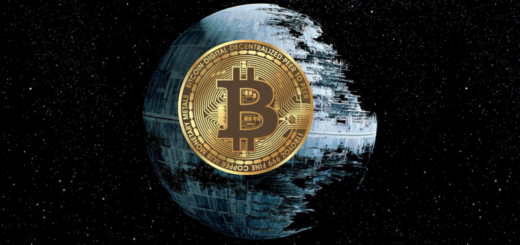Bitcoin Is What You Decide To Do With It First And Foremost
Here is my answer to a big question that has arisen since the emergence of Bitcoin.

Bitcoin was officially launched on January 3, 2009, by the mysterious Satoshi Nakamoto. During its first years of existence, it must be admitted that apart from some well-informed technophiles, Bitcoin did not interest many people. It was only when its price exceeded $1,000 at the end of 2013 that the media and economists began to take a real interest in the Bitcoin phenomenon.
Since then, a major issue has taken hold of the media, economists, regulators in most countries of the world, and also the fervent supporters of Bitcoin.
What can Bitcoin be linked to from the point of view of the financial world?
Indeed, should Bitcoin be considered a commodity? Or rather as security? Or finally as a currency?
In this article, I propose to give you my answer to this answer and you may be surprised to read it.
Bitcoin Is A Commodity
For U.S. regulators, the way in which Bitcoin is viewed will change the jurisdiction on which the most emblematic cryptocurrency will depend. Indeed, until then, Bitcoin has been considered a commodity by U.S. regulators, which means that it must comply with the rules of the Commodity Futures Trading Commission (CFTC).
It should be noted that the European Union’s position on Bitcoin is somewhat different since Bitcoin is considered as a currency.
The fact that Bitcoin is a commodity can be completely understood since, like gold, it exists in finite quantity, the number of which is known as 21 million.
In addition, Bitcoin increasingly appears to be used as a store of value investors will accumulate confidence that it will always have a significant and increasing value. This is what central banks around the world do by storing large quantities of gold, for example.
Indeed, gold is no longer used as a medium of exchange today because of a change in the monetary system dating back to the end of the Bretton Woods system decided by Richard Nixon in 1971. For Bitcoin, its very high volatility in the market prevents it from being really used as a medium of exchange.
Bitcoin Is A Security
On the other hand, the arguments defending Bitcoin as security are entirely admissible. Indeed, Bitcoin has a very high level of fungibility and can be a financial instrument with a monetary value.
Bitcoin was used to raise funds as part of ICO (Initial Coin Offering).
ICOs were very successful in 2017 before many scams calmed the euphoria of this new type of fundraising instrument.
STO (Security Token Offering) were then created. It is the tokenization of a financial asset on a Blockchain. A token from an STO represents a contract in an underlying asset, such as stocks, bonds or real estate investment funds.
In short, STO is a hybrid approach between ICO and the more traditional IPO (Initial Public Offering) that can be based on Bitcoin.
If Bitcoin has characteristics of a security and is used as such by some, the SEC would like to point out that Bitcoin cannot be a security for the simple reason that no trusted third party secures this type of transaction.
For Bitcoin supporters, this is not a problem because they are confident that Bitcoin will remain available, transparent and tradable in the market while respecting the law of supply and demand.
Bitcoin Is A Currency
As I explained earlier, the European Union considers Bitcoin to be a currency. It must be said that a currency has no intrinsic value. It is only valuable because of the trust that users have in it when carrying out transactions.
The Bitcoin community has great confidence in Bitcoin.
On the criterion of trust, Bitcoin can therefore be present. Bitcoin can be used as a medium of exchange between individuals but also as a means of payment. Moreover, more and more physical merchants are beginning to support Bitcoin as a means of payment.
Transaction fees may be high in the event of network congestion, but overall Bitcoin can already be used as a means of exchange. It is fungible as explained above, which makes it interchangeable. In addition, it is divisible up to 8 decimal places. The smallest subdivision of Bitcoin is 0.0000000001 BTC or 1 Satoshi.
Bitcoin therefore has many characteristics of a currency.
However, Bitcoin is not centralized unlike fiat currencies, and exists in limited supply since only 21 million BTC can be mined. Finally, it is not possible to create Bitcoins on demand as central banks can.
New Bitcoins can only be created via mining, which is the process of validating blocks of transactions on the Bitcoin network.
Bitcoin Is A New Technology That Cannot Really Be Categorized
As I have just demonstrated to you, Bitcoin can be considered a commodity, a security, and a currency depending on how its users will use it.
Thus, Bitcoin must be seen as a new technology aimed at revolutionizing the world of finance as we know it today. Bitcoin is decentralized and that is precisely what makes it so strong because it doesn’t need any trust third-party.
Bitcoin cannot be categorized with concepts from traditional finance simply because it is much more powerful than anything we know today.
The debate on a categorization of Bitcoin that recurs frequently cannot, therefore, be answered in the world of traditional finance, in my opinion.
Bitcoin is a versatile and revolutionary technology that adapts to the needs of its users, making it all the more useful. Commodity, security or currency, Bitcoin can play all roles depending on the circumstances in which its users will use it.







